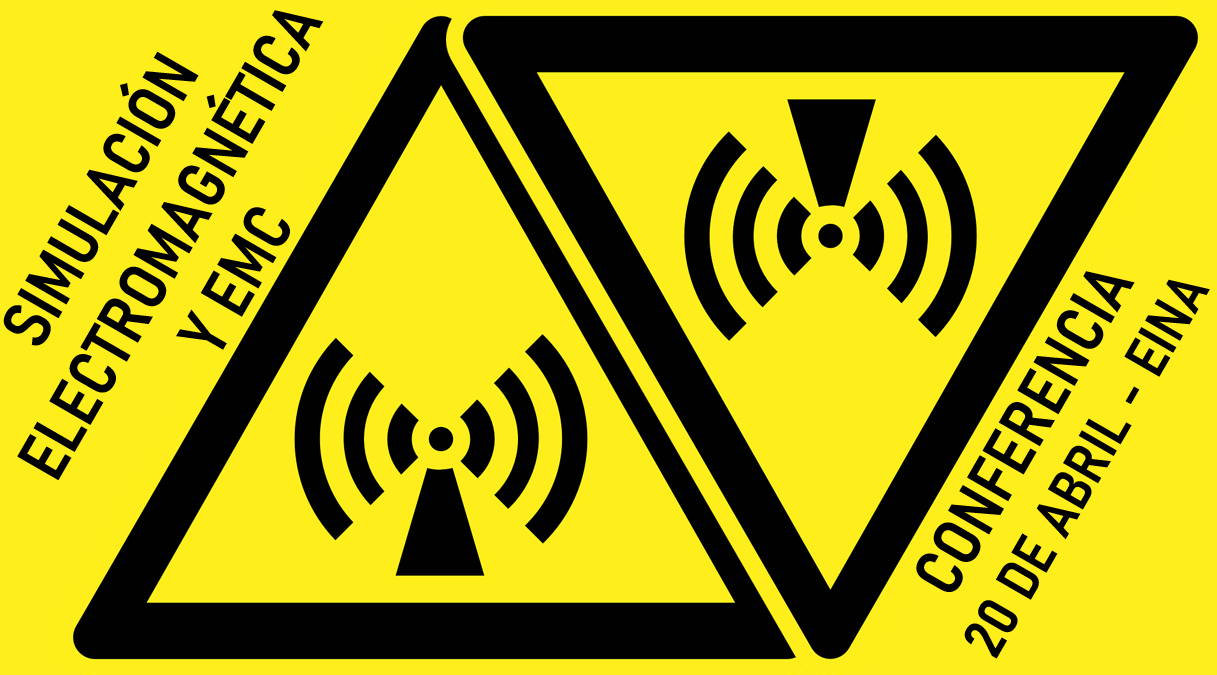Simulación electromagnética y EMC
La compatibilidad electromagnética (EMC) es un aspecto crítico para la industria electrónica en general. Los fabricantes de productos electrónicos (es decir, los sectores de telecomunicaciones, industria, entretenimiento, iluminación, defensa, médico y científico) deben demostrar que los productos que comercializan no crearán interferencias en otros equipos o no serán afectados por la energía electromagnética típica en el entorno en el que se instalarán. En esta sesión se hará una presentación general del problema con especial énfasis en el estado del arte de la simulación EMC.
FECHA: 20 Abril 2022
Salón de Actos del Edificio Ada Byron
AGENDA PARTE 1: CONFERENCIA
- 09:30-9:40 Bienvenida y presentación (A. Mediano)
- 9:40-10:40 EMI/EMC: una perspectiva general (A. Mediano)
Cómo los productos electrónicos pueden generar o ser afectados por interferencias electromagnéticas. Cómo la industria electrónica está afectada por el problema de la EMC.
- 10:40-11:40 Simulation and EMC - I (M. Sorensen) --- Idioma: Inglés
What is EMC simulation?. Possibilities and limitations. Why to use simulation in EMC: advantages and limitations. State of the art tools. Visualization of EMC phenomena - 11:40-12:00 Descanso
- 12:00-12:45 Understand shielding with simulation (M. Labodía)
- 12:45-13:45 Simulation and EMC - II (M. Sorensen) --- Idioma: Inglés
- How good predictions do simulation provide? Simulations and actual measurements. Examples of EMC simulation. Needed investments: price, training efforts and continued updating
PART 2: SESIÓN PRÁCTICA
El objetivo de esta sesión es introducir a los asistentes en la simulación electromagnética haciendo uso de la versión de estudiante de CST y/o HFSS.
- 16:00-17:00.How simulators work (M. Sorensen). --- Idioma: Inglés
Crash course into the numerical methods for EMC simulation. Examples from real life.
- 17:00-18:00 Simple hands on examples carried out with organizers guidance (M. Sorensen and M. Labodía). --- Idioma: Inglés
ORGANIZAN
IEEE EMC-S Spain Chapter, IEEE Zaragoza Student Branch, IEEE EMC-S Denmark Chapter, GEPM-I3A, Máster en Ingeniería Electrónica UZ, Máster en Ingeniería Telecom UZ
ORADORES
- Morten Sørensen (Senior Member, IEEE) received the M.S. degree in physics from Aarhus University, Aarhus, Denmark, in 2005, and the Ph.D. degree in electrical engineering from Aalborg University, Aalborg, Denmark, in 2018. From 2006 to 2017, he was an EMC and Antenna Specialist with Bang and Olufsen, Struer, Denmark, including three years, from 2011 to 2014, as a Researcher and Technical Project Manager in the innovation consortium, “EMC Design—First Time Right.” From 2017 to 2019, he was a Visiting Assistant Research Professor with the EMC Laboratory, Missouri University of Science and Technology, Rolla, MO, USA. Since June 2019, he has been an Associate Professor with the Centre for Industrial Electronics, University of Southern Denmark, Odense, Denmark. His current research interests include near-field scanning, RF designs, electrostatic discharge, and system-level radiated emission.
- Arturo Mediano (Senior Member, IEEE) received his M.Sc. (1990) and his Ph. D. (1997) in Electrical Engineering from University of Zaragoza (Spain), where he has held a teaching professorship in EMI/EMC/RF/SI from 1992. He has been involved in R&D projects with companies in the EMI/EMC, Signal Integrity and Radiofrequency (RF) fields for communications, industry, medical, and scientific applications since 1990. He is member of the GEPM (I3A) at University of Zaragoza. He has taught hundreds of courses/seminars for industries and institutions in the fields of EMI/EMC/SI/RF in Europe, USA, and APAC. He is one of the Instructors of Besser Associates, Inc. (CA, USA), offering periodically public and on site courses in EMI/EMC/SI and RF subjects through the USA, especially in Silicon Valley/San Francisco Bay Area and San Diego.
- Miguel Labodía (Member, IEEE) received his M.Sc. (1990) and his Ph. D. (1997) in Electrical Engineering from University of Zaragoza (Spain). He has a broad experience in industry as designer and manager in different companies from telecom field. He is member of the GEPM (I3A) at University of Zaragoza working as researcher from 2017 in the field of electromagnetic simulation for EMI/EMC and RF applications mainly in collaboration with companies.
